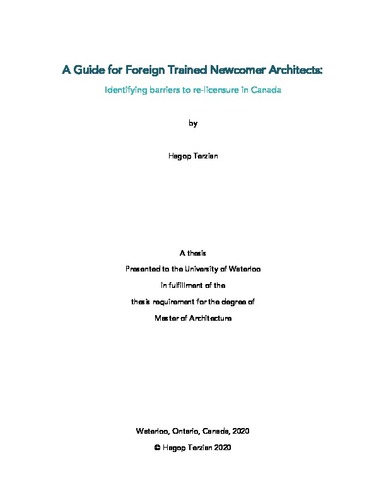| dc.description.abstract | Canada has a reputation of maintaining a positive outlook on immigration and prides itself on the belief that its doors are open to individuals all around the world. Canada’s government welcomes a diverse number of immigrants who have come for reasons including economic pursuit, family reunification, or to seek protection as refugees. According to 2017-2018 Canadian statistics, 80% of the nation’s population growth was due to the international migration of newcomer Canadians. Of those permanent residents admitted into Canada, 58% were of the Economic Class category (Hussen, 2018); who significantly contribute to the Canadian economy. As it pertains to this thesis, newcomers are defined as immigrants belonging to the Economic Class. Although it appears that migration might be open to all cultures, there is a hidden barrier that might prevent some immigrant professionals from migrating to Canada. Self-governing professional bodies, of disciplines such as architecture, engineering, law, nursing, and others, have systemic implicit biases that establish barriers and bar newcomer professionals from practice. This thesis investigates and unpacks the practices of these professional bodies, with a focus on architecture. While rules and regulations ensure the safety of both the public and the client, can self-governing bodies in Canada offer opportunities to professional newcomer architects to encourage, instead of deterring them from practice? Practicing architecture in Canada is mandated by the provincial self-governing body, the Ontario Association of Architects (OAA). This thesis investigates and compares the history, organizational processes, and public interface of the OAA to other self-governing professional organizations and recommends options that can be integrated into the practice. | en |

